 WW1 Imperial Russian Naval Aviation
WW1 Imperial Russian Naval Aviation
Imperatorskíy Voyenno-Vozdushnyy Flot (I.V.V.F.)
Introduction: Birth of the Imperial Russian Air Service

On May 30 1912, Vice-Admiral of the Imperial Russian Navy Alexander Karl Nikolai von Lieven submitted written report No. 127, planing the creation of aviation detachments operating with the three fleets (Baltic, Black sea and Pacific). The document was approved, but with reservations by the Naval Minister, Vice Admiral Ivan Grigorovich. It became an effective order as signed by the Naval Ministry. The report was compounded by MGSh No. 1706/272 letter, dated 06/02/1912 and adressed to the head of the General Staff School, intimating the creation of new infrastructures for naval aviation units in 1913.
On 1st January 1913, the Императорскій военно-воздушный флотъ, or “Emperor’s Military Air Fleet” first seaplane and two wheeled airplanes were assigned to the Baltic, and five seaplanes to the Black Sea. In early 1914, the Minister of the Navy ordered the creation of an aviation department as part of the Naval General Staff with three officers in charge. At that stage, manufacturers were mobilized and specifications emitted as well. The needs comprised both seaplnes (soon built by Grigorovitch) and various fighters and reconnaissance models, land-based. Therefore land-based and naval aviation completed each others, the same manufacturers supplying the Navy. However soon, seaplanes became the quasi-monopoly of Grigorovitch, a name famous at the time but which vanished in the interwar.
The power of the Russian aviation as a whole could come as a surprise as the country was considered “backwards” to western standards, but still, boasted the world’s largest air fleet, followed by France (263 aeroplanes against 148 respectively). A formidable effort had been made indeed to modernize the country, helped by loans and massive foreign investments.
Russian naval aviation in the great war
As World War I broke out, Russian Naval Aviation units were mobilized, in particular the one from the Baltic Sea and Black Sea, as the conflict started in the Balkans, when backing the Serbians. But at the time, they were still at the stage of organizational formation. On August 1, 1914, the Naval Ministry could count on three dozen aircraft, 20 certified pilots to start operations. 10 more officers were trained directly in the fleets and just 10 seaplanes were operational in the Baltic from Libau, 8 seaplanes in the Black Sea, based in Sevastopol and Kilen Bay. Detachments were planned for the Pacific Ocean only from the summer of 1915, but it was never implemented.
By early March 1915, this had grown to 77 aircraft: 47 in the Baltic, 30 in the Black Sea (all seaplanes). The staff comprised 78 officers and 859 lower ranks pilots, mechanics and administrative personal.
Two vessels and six seaplanes were operated in the black sea, one armed steamship converted into a seaplane carrier, operating five M-5 seaplanes and the cruiser Almaz rebuilt to operate also seaplanes. The naval aviation section was part of Black Sea Fleet and managed by the admiralty, like the Baltic.
Russian Seaplane Carriers
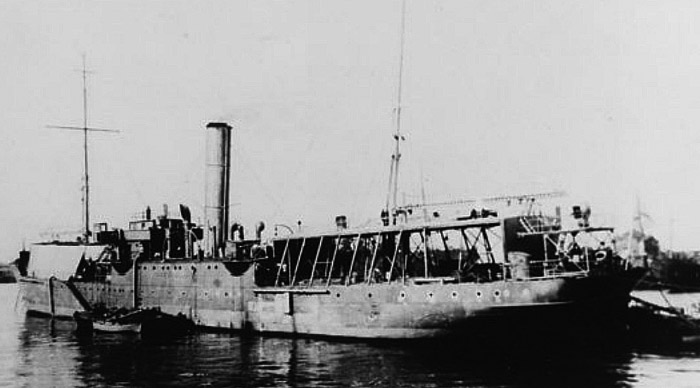
Otlitsa
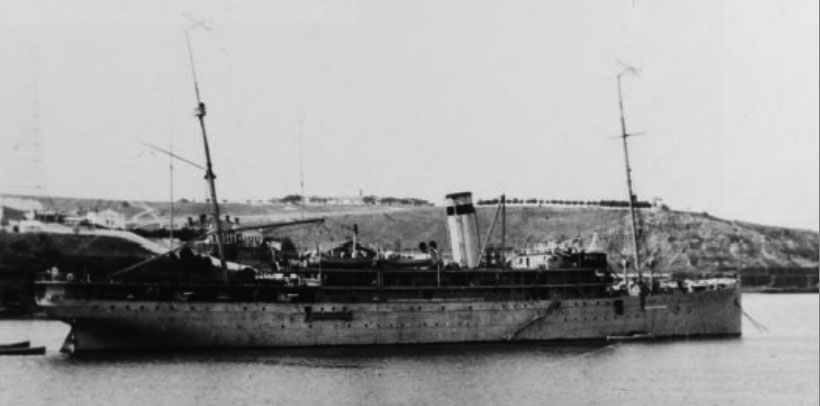
Imperator Nokilai I
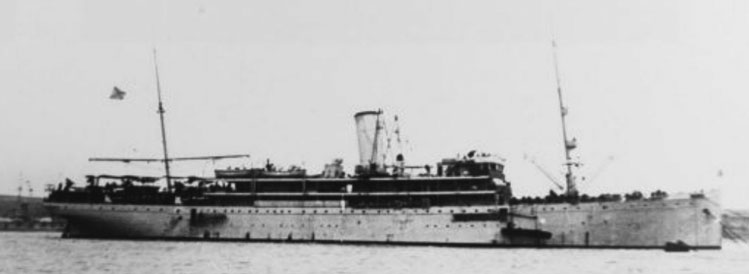
Imperator Alexander I
One component of the Russian Naval Aviation was the capacity to project air power far from its bases. This was the role of seaplane carriers, something often forgotten, but which was as common were aircraft carriers during WW2. Russia never had the time to built dedicated vessels and converted about eight vessels, among which the Volodga, Orlitsa, the Imperator Pavel class “aviation cruisers”, Regele Carol I and the two Romania class. They started operation for the latter in 1916.
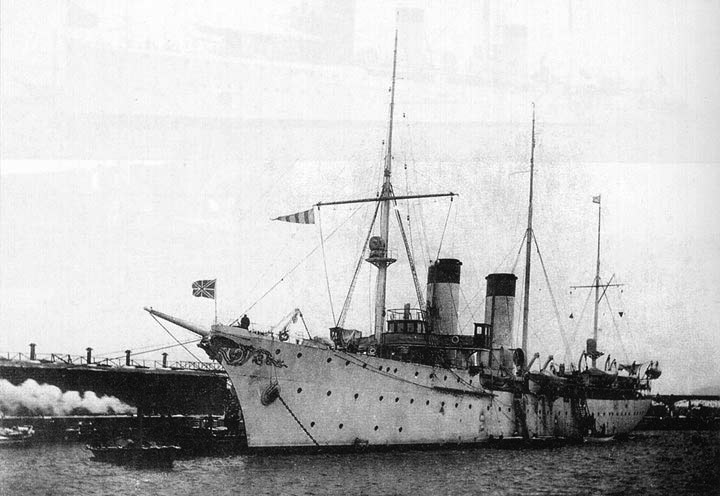
Rebuilt as a seaplane tender in 1914, Almaz carried four seaplanes, she fought at the Battle of Cape Sarych on 5 November 1914. Captured by the “Whites” she ended in Bizerte as part of Wrangel’s fleet. src and src
On 1 January 1917, Russian Naval Aviation reached 264 airplanes, included 152 land-based aircraft or the fighter, reconnaissance and bomber type, plus 4 small controlled balloons in the Black Sea Fleet alone. There were 88 aircraft in the Baltic, seaplanes included and 29 available in the Petrograd and Baku officer aviation schools.
From September 1916 to May 1917, no less than 61 Grigorovich M-11 and M-12 seaplanes were received. 26 were sent to the Black Sea, 20 the Baltic having respectively 115 and 96 officers, 1039 and 1339 pilots, non-commissioned officers and privates non counting dedicated personal. Missions were same as thos units in WWI generally: Reconnaissance mostly, patrols, and occasional attacks. Coastal bases fighters were used to intercept occasional German bomber raids in 1917 in the Baltic, but activity was more restrained to operations against the Turkish Navy.
Russian revolution and civil war
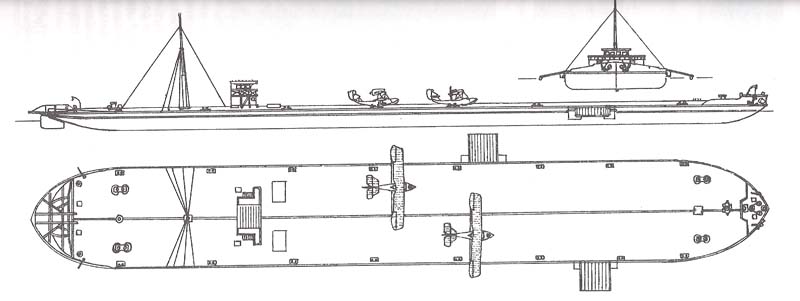
The second Russian “aircraft carrier” (TAKR), the converted Barge “Death” src
The Imperial Russian Air Service was abolished after the Russian Revolution. It was reorganized and renamed
The “Red” and later Soviet naval aviation units were created in 1918. They took part in the Russian Civil War in coordination with the ships operated and covering the army fighting in Petrograd, but also peratring against the “whites” in the Baltic and Black Sea. They also took a prominent part in land operations from the Volga, Kama River, Northern Dvina rivers, as well as Lake Onega. There were only around 76 obsolete hydroplanes of WWI types operated and support was halp-hazard. These seaplaned were mostly used for ship’s supply and reconnaissance, as for the army.
One interesting development were the “red aircraft carriers”. In 1918, the Red Army commissioned an interesting project for the Volga Flotilla, starting from an old oil-carrying barge.The idea was to convert her into a seaplane carrier. The Kommuna as renamed, was equipped with two cranes and a catapult to operate 9 aircraft: Six Grigorovitch M-9s and three French Nieuport 17 seaplanes. The 140 meters [450 feet] vessels by 19 meters was used to provide the army intelligence, and attacking the White Army fortifications and ships. Not self-propelled she was operated by tugboats along the Volga.
Common drawback was the absence of a roof (no hangar) and in 1919-1920 a new barge was converted, renamed мертвых (“Death”), 153.7 m by 23.5 m in the Sormovo plant. The upper deck was cleared of all superstructures and two wooden hangars were built to accommodate up to ten M-9 flying boats with a passage in between to deploy the aircraft. On both sides of the hull were arranged wooden slopes on wooden brackets to recuperate seaplanes. The barge was refurbished and took part in the last operations of the war, also on the Volga, and later converted to a river military transport barge.
In the early 1920s, the consolidated Soviet Power started to plan an improvement and reorganization of Naval Aviation. New reconnaissance hydroplanes, bombers, and fighters were acquired and gradually, until mid-1930s, a powerful Naval Air Force was created in support of the Baltic Fleet but also the Black Sea Fleet and, at last, for the Pacific Fleet. It grew up to 1,445 aircraft, but this chapter is covered in the generic naval aviation page, and will be in a dedicated article on the Aviatsiya Voenno-morskovo Flota during the great patriotic war.
Russian air power in 1914
Development of planes in Western Europe was certainly not lost to some officers at the Tsar’s court, neither some industrialists. So at the beginning of WW1 Russia aligned no less than 244 planes. Some were clearly obsolete, most had been exported or built under licence. Also there were 12 airships and 46 balloon in service with the Army. Comparatively with the Germans this was good (about 260 planes), but derisory compared to the immense scale of the continent-empire. On this total only 150 planes were immediately usable in first line, but only for 79-80 certified pilots. Also this industry lacked qualified workers and suffered a general backwardness in equipments and infrastructures in general. Below, left picture: Taran Aerial ramming attack by Pyotr Nesterov, against an early Albatros B.I. This kind of desperate tactic became a trademark of the spirit and aggressiveness of Russian aviators and even extended to tanks during WW2. This Austro-Hungarian Albatros became the world’s first enemy aeroplane destroyed in flight, on 8 September 1914.
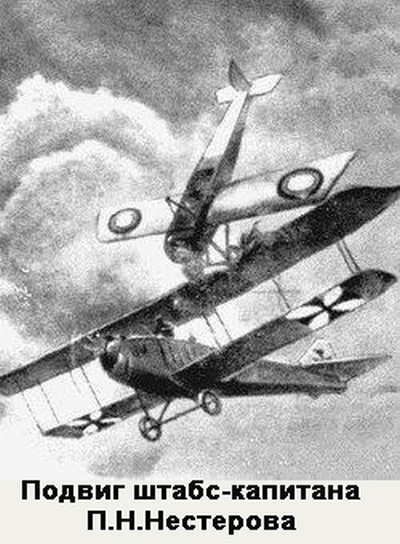 This sorry state would not evolved much until October 1917. That was not by lack of interest. Sikorsky in particular was a pioneer quite in advance in heavy duty planes, making its four engine Ilya Mourometz fly in 1913 already; (Later on, the Tsar would order 32 of these). So in theory, Russia was able to mount long range bombing raids over Germany at the very beginning, which were performed despite all odds by Childovski. Despite some initial skepticism with the Nobility for these machines “only good enough to scare horse” from 1910 five military air service schools appeared in the largest cities, like Sevastopol and Moskow.
This sorry state would not evolved much until October 1917. That was not by lack of interest. Sikorsky in particular was a pioneer quite in advance in heavy duty planes, making its four engine Ilya Mourometz fly in 1913 already; (Later on, the Tsar would order 32 of these). So in theory, Russia was able to mount long range bombing raids over Germany at the very beginning, which were performed despite all odds by Childovski. Despite some initial skepticism with the Nobility for these machines “only good enough to scare horse” from 1910 five military air service schools appeared in the largest cities, like Sevastopol and Moskow.
But the fact remains that Russian aviation was the world’s second in size, after france, with 263 aeroplanes and 14 airships, but the aeroplanes in particular were mostly obsolete, being from 1911-1912 for most. Russian pilots flew with their personal weapons, the 7.63mm Mauser C96 preferred over the 7.62mm Nagant revolvers, and some carbines. Kazakov even tried hooks and dynamite. These planes performed reconnaissance and artillery fire coordination, and directed some ground attacks with steel flechettes, standard army grenades and later air-dropped bombs or petrol bombs. On 17 January 1915 The Ministry of War issued an order to arm aeroplanes with 7.62mm Madsen or 7.71mm Lewis light machine guns and the Russian Imperial naval aviation was officially created on March. The air service was transferred directly under command of the Stavka (General HQ) and by 1916, the black sea fleet saw its first two seaplane carriers, equipped with 14 M.9 seaplanes.
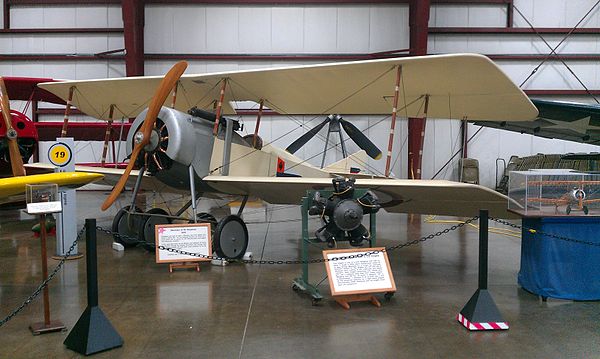
Russian aircraft manufacturers
Still, in 1914, Russian manufacturers were quite in touch with Western tech, from France, Germany, UK and USA. Officers were already familiarized with Douhet theories, of the first bombings in Libya, of Glen Curtiss naval trials… However despite the list below, the bulk of the production was still imported from the west, first among these being French planes, Farman, Nieuport, Morane were built by Dux and RBVZ, while the British BE2c and FB19, Sopwith Strutter (125) were purchased, imported or even captured.
Airframes
- Petrograd Russo-Balt RBVZ wagon factory
- VA Lebedev, SS Chtcheninine (Petrograd)
- Sliousarenko (Petrograd)
- Steglau (Petrograd)
- Slesarev (Petrograd)
- Lomatsch (Petrograd)
- Dux factory (Moskow)
- Bezobrasov-Ponikovine (Moskow)
- AA Anatra (Odessa and Simferopol)
- Slessarenko (Odessa)
- Lebedev (Penza, Taganrog)
- Sakov (Lipetsk)
- Polytechnik Institute of Kiev
- Terechtchenko (Kiev)
- Aviata (Kiev)
- Adamenko (Kiev)
- Sass/Lenzi (Kiev)
- MacKenzie-Kennedy (Kiev)
Engines
- Gnome-Rhône (Moskow)
- Singer/Sewig (Podolsk)
- National engine factory (Kherson)
- Llyine, Deka, Axai (other licence manufacturers)
Russian aviation in the Great War
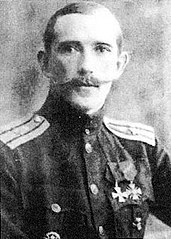 Right: Alexander Kazakov, the first Russian ace, started making a name for himself by using grappling hooks to off balance enemy planes. The Russian also inherited planes deemed dangerous and eliminated in the West like the SPADs A2 (57) and A4 (10), because of their observation post located right in front of the propeller; The Russian cocard which was applied had the same colors as France, UK, USA, therefore only the order of the concentric colors changed: White in the center, then blue and red. Therefore it was much easier for planes of both sides to distinguish friends from foes, central powers having crosses and their enemies, roundels whatever the colors and orders used. Also many Russian plans received skis in winter, replacing their wheeled train. One of the most prolific Russian plane became the Morane L, equipped with a 80 hp Gnome engine, 430 being turned by Dux and Lebedev. Morane-Saunier H and Morane-Saunier G were also used, parasol and mid-fuselage monoplanes, about 500 or more Farman F.30 (under licence) delivered, a more confidential Hackel 8, Nieuport 12, 16, Nieuport 21, or Rumpler C.1.
Right: Alexander Kazakov, the first Russian ace, started making a name for himself by using grappling hooks to off balance enemy planes. The Russian also inherited planes deemed dangerous and eliminated in the West like the SPADs A2 (57) and A4 (10), because of their observation post located right in front of the propeller; The Russian cocard which was applied had the same colors as France, UK, USA, therefore only the order of the concentric colors changed: White in the center, then blue and red. Therefore it was much easier for planes of both sides to distinguish friends from foes, central powers having crosses and their enemies, roundels whatever the colors and orders used. Also many Russian plans received skis in winter, replacing their wheeled train. One of the most prolific Russian plane became the Morane L, equipped with a 80 hp Gnome engine, 430 being turned by Dux and Lebedev. Morane-Saunier H and Morane-Saunier G were also used, parasol and mid-fuselage monoplanes, about 500 or more Farman F.30 (under licence) delivered, a more confidential Hackel 8, Nieuport 12, 16, Nieuport 21, or Rumpler C.1.
Other Russian aces included Vasili Yanchenko (16), Pavel Argeyev which also fought on the Western front (15), Ivan Vasilyevich Smirnov (11), Grigory Eduardovich Suk, alias Grigory Suk (10 ), Ivan Loiko/Loyko (8), Donat Makijonek (8), Vladimir Strzhizhevsky (8), Yevgraph Kruten (7) which also served in the French Aéronautique Militaire, Alexander P. de Seversky (6), Konstantin Vakulovsky (6), Victor Fyodorov (5), and also at 5 victories, Juri Gilsher, Nikolay Kokorin, Ernst Leman, Ivan Alexandrovich Orlov, Alexander Pishvanov, Eduard Pulpe (served in the French Aéronautique Militaire), Mikhail Safonov and Viktor Utgof. Kazakov was educated in military schools and entered the army in 1908, served in the cavalry, and transferred to aviation in 1913. He flew with the 4th Corps Air Detachment in Poland on a Morane-Saulnier. When meeting enemy planes he try to launch explosives and grappling hooks but scored his first victory (spring 1915) by ramming his opponent. In September he was commander of the 19th Corps Air Detachment, then 1st Combat Air Group. Until he was wounded in action on 27 June 1917 he had scored eight victories, plus all those which preceded, on a Nieuport 11, then 17. With 20 victories, he resigned in January 1918 and joined the British Joint Military forces at Murmansk in June, and as a Major, commanded the Slavo-British air detachment at Benezniky. By March, still fighting the the Whites, and having recovered from wounds, he was very afflicted by the withdrawal of British forces by the summer of 1919. He flew and crashed to his death in August, apparently a suicide.
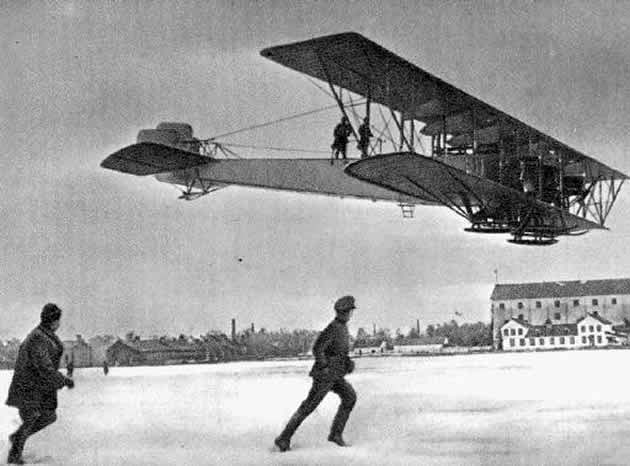
The Ilya Murometz was the first four-engine heavy bomber of the war, and an entire unit of these, headed by Chidlovski, became the world’s first strategic bomber squadron.
The first Russian fighter
The fact a coherent unit used about 30 Murometz quad-bombers at the beginning of 1915, which rapidly gained fame and recoignition, also pushed officers to ask for a fighter for close protection. The RBVZ would create based on these specifications, the Sikorski S.16, first Russian fighter of the war, designed by Igor Sikorsky. More precise specs were ordered specifically by Chidlovski, commander of the Murometz bomber unit. The S.16 was somewhat inspired by Farman, but had a rotative Le Rhône engine (and later Kalep), a synchronized Lewis MG on the left side of the engine hood. Both planes were of the same size. They first flew in February 1915. A small serie of 18 were deployed in 1916, but they were hopelessely outclassed by German fighters and of dubious use.

Other proper Russian planes
Russo-Baltic works or RBVZ would also produced other models, namely the Sikorski S-5, Sikorski S-7, Sikorski S-9, Sikorski S-10 (1913), Sikorski S-11, Sikorski S-12, Sikorski S-16 (1915), and S-20 (1916), Russky Vityaz (The Grand) (1913), and the famous bomber series named Il’ya Muromets. Other notable aircrafts of this era included the Lebed X, a 1916, 80 hp, 135 kph fighter, the Lebed/Deperdioussen-sport licence-built 1916 monoplane (63 built), the parasol Moska B-bis (50 built) with foldable wings, the prototype Lebed-grand or Lebed XIV bi-plane, bi-engines heavy fighter of 1917, the Grigoriev N°7, Proskhovchtchikov “Bi-kok” N°2, an experimental 2-seats pusher, Odessa’s Olkhovskii “torpedo” parasol fighter, also abandoned as being underpowered, or the very innovative Kassyanenko N°5, a biplane pusher with its propeller at the tail, and engine behind the cockpit and airframe, which allowed an excellent visiblity. The prototype was lost in trials in july 1917. The most prolific and best floatplane was the Grigorovitch M.11 and its 1917 successor the M.12, or obscure prototypes like the Slousarenko “monocok” or Modrakh plane and the Villich VL-6.
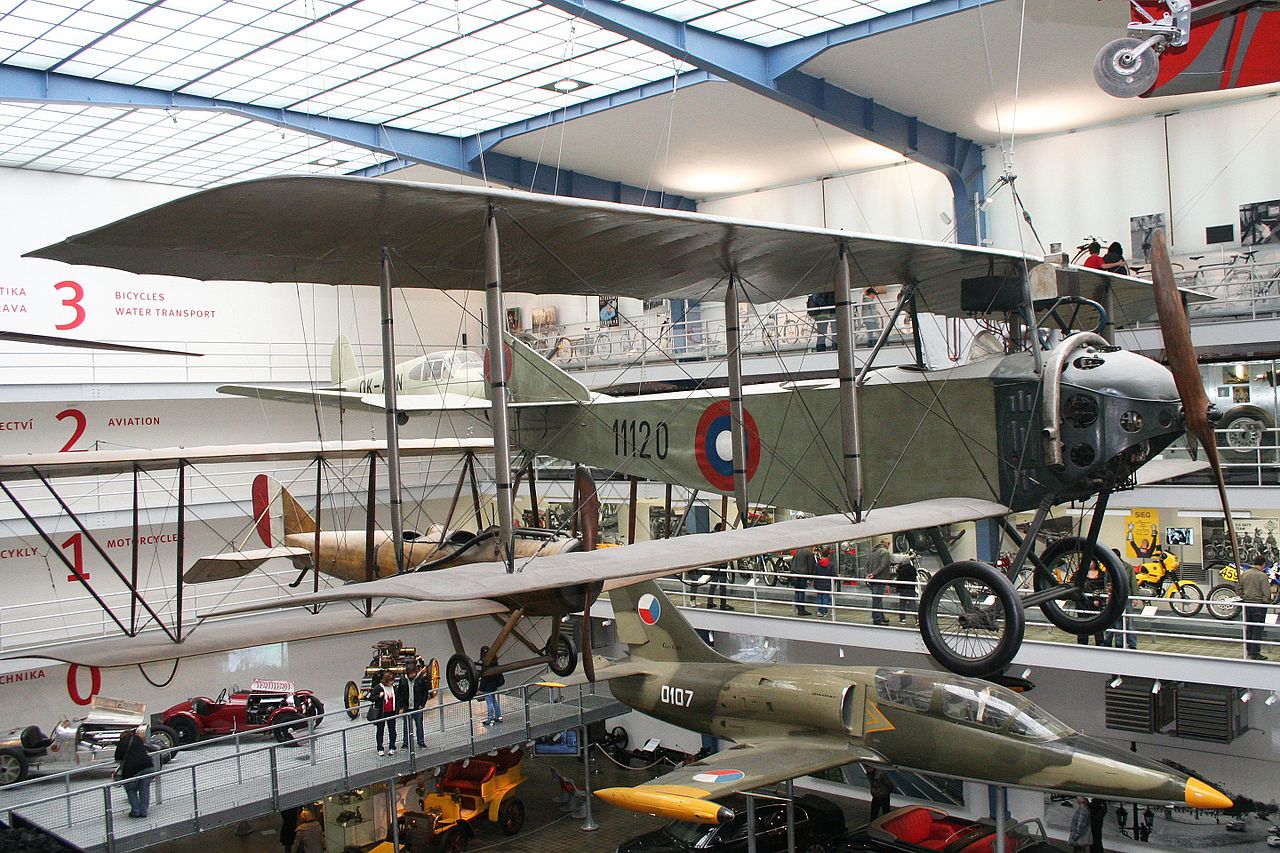
Anatra Anasal DS in the Prague National Technical Museum air Museum
1917 Revolution and aftermath
However the Russian air service was reformed with the 1917 February revolution, but in October it was dissolved completely, with a “which hunt” against officers in various HQs and pilots, that were often former cavalrymen and therefore from aristocratic families. A completely new core was created, the Workers’ and Peasants’ Air Fleet, composed with about 1.300 planes in various conditions, many obsolete. Two-third were foreign-made, Nieuport, Voisin and Farman models demonating the charts. But of this lot, only 300-350 were operated, the other being grounded because of the lack of spare parts and cannibalized, and poor maintenance because of inexperienced crews. Meanwhile, Kolchak’s white army received 65 aeroplanes and about 70 pilots, often trained in the West and well equipped and maintained, at least at the beginning. Denikin’s army was the second “white” air force in Russia at that time in 1919. Russian white pilots also intervened in the North Russia Intervention. 219 pilots also fought in the Red Army during the civila war and the order of the red banner, newly created was awarded to 16 aces.
 Anatra
Anatra
The Anatra saga
The company was funded in 1913 by Arthur Antonovitch Anatra, the factory being a creation by the local aero-club, using the same hangars used for repairs. The team came from Odessa naval batallion workshop, where, from 1909 to 1912 about twenty foreign planes under licence were assembled. In October 1912, Anatra sent a letter addressed to the general direction of aeronautics engineers to offer his services, quickly accepted and sanctioned by a general letter also sent to other manufacturers. In june 1913, Anatra workshops received an official order for 5 planes, Farman IV copies, delivered in September. Anatra would, until 1917 also produce under licence Nieuports, Farman, Voisin, and Morane. Only in 1915, after having studied these, Anatra would start his own designs, soon renown.
Models:
- Anatra: December 1915 prototype
- Anatra D Anade 170 built
- Anatra DS Anasal 184 built
- Anatra Anadis 1 prototype
Anatra Anadis, the missed fighter
This experimental model was developed in 1916, this time as a single-seat fighter variant of the Anatra Anasal. There was no rear seat but a forward-firing gun was planned and a different engine was mounted, an Hispano-Suiza water-cooled V-8, 150hp (112kW). She flew for the first time on 23 October 1916.
Anatra factory’s chief engineer Frenchman Henri Descamps, designed a biplane in wood and canvas which was to be a single-seat but preparations were made to free the second seat and carry extra fuel tanks. Indeed Descamps and another Frenchman, test pilot Robinet, felt that important social change, in fact a revolution, was to be feared, and planned their escape with this improvised two-seats version. The second seat was condemned but their planes were discovered, and they were denounced by the pilot Kononenko, but the affair did not went further. Testing went on until 11 November 1916. None was ever ordered and the prototype was left under a tarpaulin until October 1917. The Anadis would jhave been potentially a formidable fighter, as it was able to reach 153 kph and was agile enough to face German planes of the time. However nothing really happened until that Autumn of 1917. N.A. Makarof once proposed a tour in the West through Bucarest to showcase Russian knowhow and trigger more aircraft deliveries, but it never took place, the plane having engine issues in Romania, and crash landed. There are no known photographs of it.
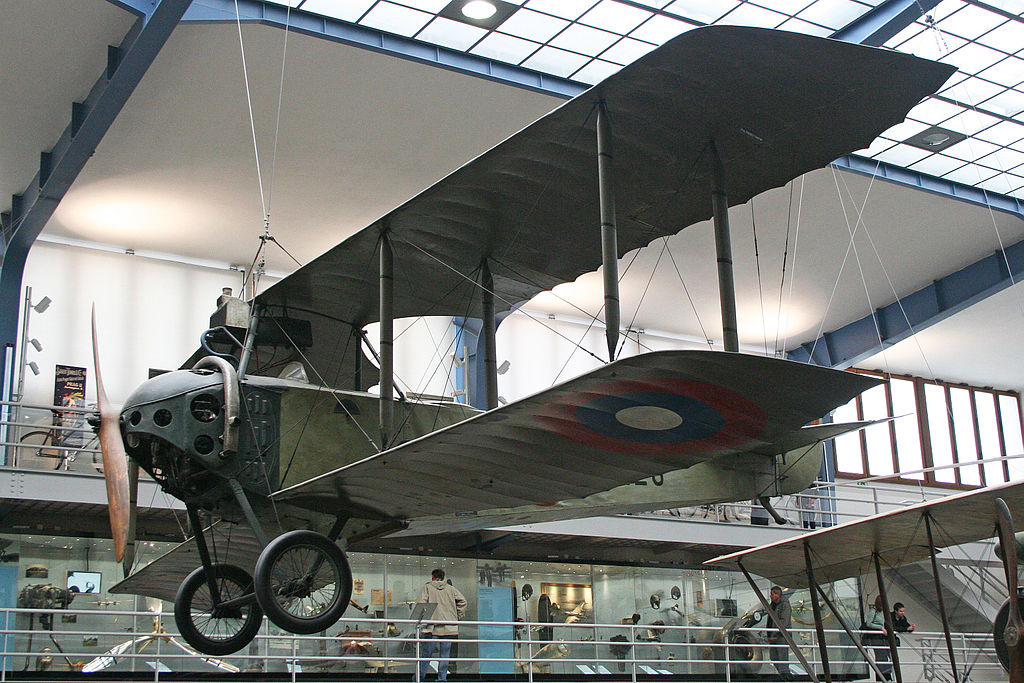
Anatra Anasal. There are no known photo of the sole Anadis.
Specifications Anadis:
-Length: 7.75 x 11.40m (24ft 7in x 37ft 5in) Wing area: 37 m2
-Weight: Empty 665kg (1466 lb), Loaded 1165kg (2568 lb)
-Propulsion: Hispano-Suiza water-cooled V-8, 150hp (112kW) Top speed: 153 km/h (95 mph) climb rate 133.3 m/min (437 ft/min)
-Armament: 7.7 mm (.303) Vickers MG (with Des Camps synchronizer), 7.7 mm (.303) Lewis machine gun (observer), 50 kg of bombs (Payload: 500kg (1102lb))
Anatra D
The first model was called Anatra D, or Anade, a two-seats, two-bay biplane of conventional type, with a pilot and observer in tandem cockpit. The Anade first flew on december 1915, but later test flights revealed design flaws like a weak wing structure and poor stability. In fact the plane killed company test pilot Jean Robinet on 21 July. But this does not deter Anatra, and modifications to the center of gravity were made an an army order came rapidly. Deliveries commenced already in May 1916, and went on until the end of the year, with a total of 170 delivered. Many of these would end in Soviet hands and flew until 1919 as trainers;
Specifications D Anade:
-7.70 m x 11.50 m x 2.9 m (25 ft 3 in x 37 ft 9 in x 9 ft 6 in) Wing area: 35.0 m2 (377 ft2)
-Empty weight 515 kg (1,135 lb) Gross weight: 865 kg (1,907 lb)
-Gnôme Monosoupape, 74 kW (100 hp), 132 km/h (82 mph), range 350 km (220 miles), ceiling: 4,000 m (13,100 ft), climb: 2.4 m/s (470 ft/min)
-Armament: One .303 Vickers machine gun for observer, up to 30 kg (65 lb) of bombs
Anatra DS
The Anatra DS or Anasal which followed was of classic construction, and propelled by an Hispano-Suiza of 150 hp (110 KW), as a two-seat reconnaissance aircraft. It first flew on 16 July 1916 and trials took place from the 23 October to the 11 November 1916 with success.
Main difference from the previous plane were the replacement of their 100 hp rotary engine with a much more powerful 150 hp Salmson radial engine (Hence the “S”), for improved performances. This water-cooled radial engine license-built in Russia needed a water radiator in front of the upper wing and had a partial engine cowling open at the bottom. The DS was also larger and better armed. In fact this was the biggest addition: A synchronized forward-firing machine gun that allowed the same capacity as fighters, while the observer’s own light machine-gun was kept. A late variant, propelled by a 160 hp Salmson engine was planned and a few of these Anatra DSS were built.
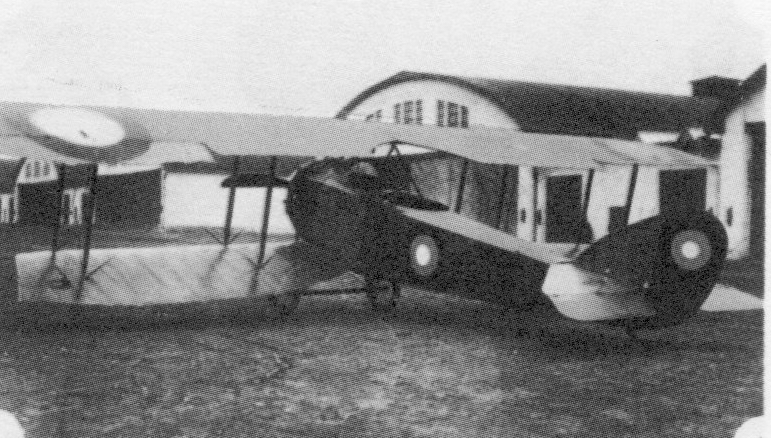
First orders only came arrived in 1917. Se when the Soviet revolution erupted in November 1917 about 60 to 70 has been manufactured (but not all delivered), while the remainder was in various stages of completion. Afterwards, the complete decomposition of the country meant many parts has to be changed and so series differed greatly almost by individual plane. Things went downhill from there. In 1918 Odessa was occupied by Austro-Hungarian forces, in accordance with the Treaty of Brest-Litovsk. Amazingly enough, the Austrians in May ordered 200 Anasals, and a complement of Anatra C.I for training and observation. 114 has been registered as obtained by the Austrians in September 1918 but by October the remainder of the order was cancelled. From there, Czechoslovakia obtained 23 former Austrian aircraft, 8 more were captured by revolutionary forces in Hungary, and 8 more were acquired in March 1919 by the Polish 4th Rifle Division in Odessa. They used these on the Russian White side. Four others were re-assembled in Poland and used during the Polish-Soviet war in 1919-20. Some were also captured at Odessa and reused by the Soviet air force until the end of the war.

Specifications DS Anasal:
-8.10 x 11.40 x 3.2 m (26 ft 7 in x 37 ft 5 in x 10 ft 6), Wing area 37.0 m2 (398 ft2)
-Weight empty 814 kg (1,795 lb), fully loaded 1,164 kg (2,566 lb)
-Engine: Salmson 9R radial, 112 kW (150 hp) top speed 144 km/h (90 mph), 3 hours endurance, ceiling: 4,300 m (14,100 ft), climb 3.0 m/s
-Armament: 7.7 mm (.303) Vickers MG (with Des Camps synchronizer), 7.7 mm (.303) Lewis machine gun (observer), 50 kg of bombs
Russian Flotplanes/seaplanes
 Grigorovitch
Grigorovitch
From design bureau to manufacturer
Born in 1883 Dimitri Pavlovitch Grigorovitch was one of the most prominent and prestigious aeronautical engineer in pre-revolutionary Russia. He studied in the reputed Kiev polytechnic institute, became engineer in 1910, and became a journalist specialized in aeroplanes, then organised the installation of Chtcherbakov and Chtchtetinine at Petrograd in 1913, the first two production complexes dedicated to aircrafts in Russia. He started creating his first seaplane in 1913 and designed several models right before the war, showcased to the Imperial Army. He would built his first official order flying boat in 1916, a fighter seaplane for the Navy…
The manufacturer was Shchetinin (Щетинин) or Pervoye Rossiyskoye Tovarishchestvo Vozdukhoplavaniya S. S. Shchetinin i Kowas no less than the first Russian aviation company founded in St. Petersburg in 1910 by the famous pilot S.S. Shchetinin and lead designer Dmitry Pavlovich Grigorovich. It focused on flying boats initially were modeled after the American aircraft Curtiss Model K. All models comprised the prefix “M” for “Marine”. production models were the M-5, M-9, M-11/M-12, M-15, M-16 and M-24/M-24bis which were so prolific they served through the Russian civil war and the 1920s, with the new Soviet Air Force and Navy as well as the Finnish air force.
Models:
- Grigorovitch M1
- Grigorovitch M2
- Grigorovitch M3
- Grigorovitch M4
- Grigorovitch M5 (1915) 100+ built
- Grigorovitch M6
- Grigorovitch M7
- Grigorovitch M8
- Grigorovitch M9 (1916) 500+ built
- Grigorovitch M20 10? built
Early prototypes: Grigorovitch M1-M4 (1913-1914)
A single-engine flying boat essentially similar to the French Donnet-Lévêcque (1912), a two-seater side by side of mixed construction, powered by a Gnome engine. Floats were fitted at the end of the lower wing and there were attachment points for a towing dolly to pull it out of the water when needed. The nose was shortened by about one meter, the Farman type wing profile altered, and the hull step reduced from 200mm to 80mm. fter it first flew in the autumn of 1913 and passed some tests, it was not retained for production, but future derivatives will. 7.4 m (24 ft 3 in) x 9.5 m (31 ft 2 in) (wingspan), empty weight 420 kg (926 lb). M2, M3 and M4 were variants of this first model.
Grigorovitch M5 (1915)
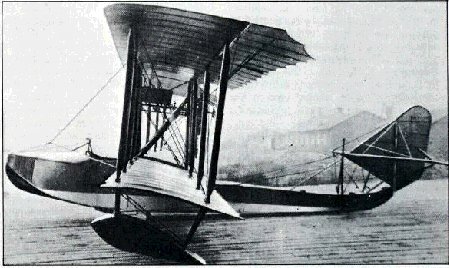
Also called Shchetinin M-5 since it was built in the very complex Grigorovitch helped to create, this design which first flew in the spring of 1915 was the first successful two-bay unequal-span biplane flying boat using the single step hull of Grigorovich and also first mass production flying boat in Russia. It came from gradually improved prototypes from the M-1 to M-4 the design, at least 100 were produced to replace foreign imported aircraft like Curtiss Model K/FBA series. Of wooden construction, the hull was covered in plywood, the wings and tail covered in fabric. The stepped the hull tapered into little a boom supporting a single fin and rudder tail unit braced by means of struts and wires. It was propelled by a single pusher mid-wing 100 hp Gnome Monosoupape engine. Later production models will use the 110 hp Le Rhône and 130 hp Clerget engines and the pilot and observer were seated side-by-side. The observer manned a single 7.62 mm Vickers machine gun on a pivot mount for defence.
In operation, the Grigorovitch M5 served with the Navy in the Black Sea or Baltic due to weather conditions, and were integrated into the brand new Imperial Russian naval air arm. Surviving lanes would make they way into the civil war flown by both camps, “Reds” and “Whites” some retained as trainer well into the late 1920s, also being still used for reconnaissance. One served with the Finns, captured at Kuokkala in 1918 and it flew until 1919. The Istanbul Aviation Museum now houses the only survivor, shown with Turkish Ottoman Air Force markings.
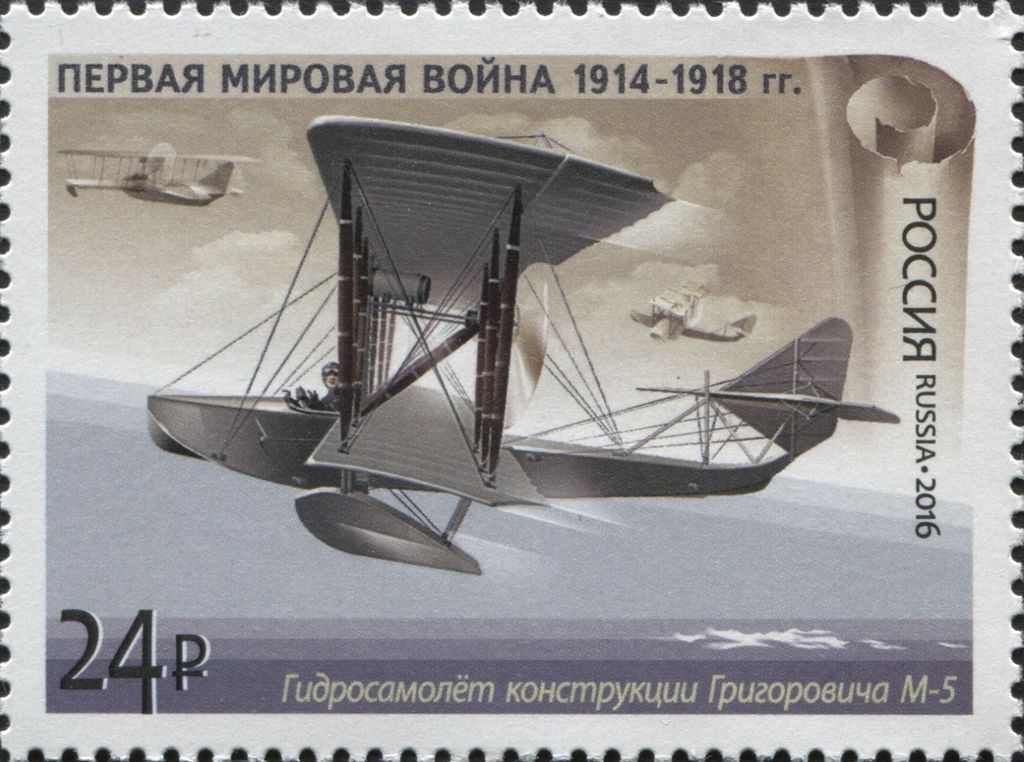
Post stamp of a Grigorovitch M5
In addition to the M-6, an unsuccessful prototype variant fitted with 150 hp Sunbeam engine, the M-7 was tested with a rounded hull and larger keel but was dropped because of poor take off characteristics. The M-8 had an even further rounded hull but was even worse for take-off and never produced. The M-10 was another prototype, a smaller version powered by a Gnome Monosoupape engine in 1916. The M-20 finally was two-seat reconnaissance version powered by a Le Rhone 89 kW (120 hp) engine, which saw a small production in 1916. The Grigorovitch M5 also served with the postwar Soviet SFSR or red Army and Soviet Naval Aviation.
Characteristics
Dimensions: 8.6 x 13.62m (28 ft 3 in x 44 ft 8 in), wing area 37.9 m2 (408 sq ft)
Weight: 660 kg (1,455 lb) empty, 960 kg (2,116 lb) loaded at take-off
Engine: Gnome Monosoupape 9 Type B-2 9-cylinders, air-cooled rotary pistons, 75 kW (101 hp)
Performances: 105 km/h (65 mph; 57 kn), 4 hours endurance, 3,300 m (10,800 ft) ceiling, climb rate 1.85 m/s (364 ft/min)
Grigorovitch M9 (1916)
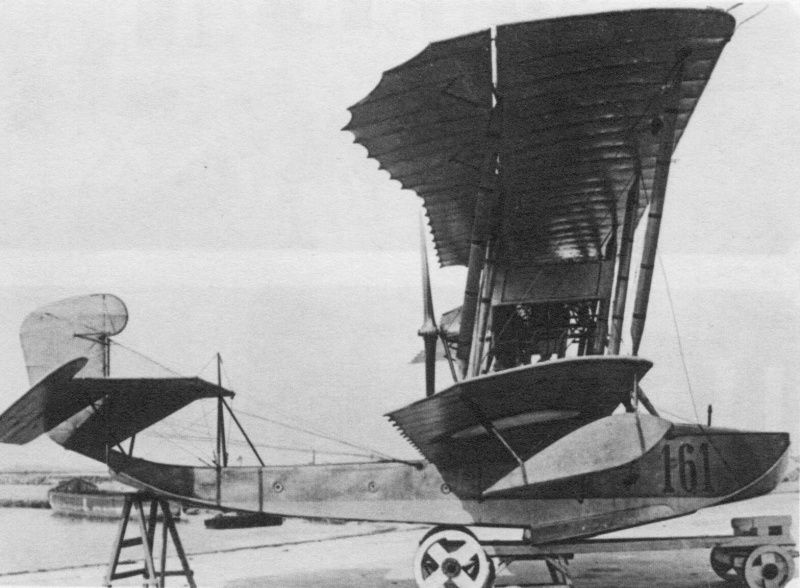
Also called ShCh M-9 or Shchetinin M-9 this Russian ww1 biplane flying boat was a development of the M-5, ready in the fall of 1915, which first flew on January 9, 1916 at Baku. By September 17, 1916, Jan Nagórski, test pilot, became the first to make a loop with a flying boat, worldwide. A good indicator of its agility and handling characteristics. The Grigorovitch M9 became the best-seller of the company, being produced by the hundreds (an estimated 500+) by Shchetinin up to the civil war. This was reliable, sturdy aircraft, a two-seater 9.00 m (29 ft 6 in) long with a wingspan of 16.00 m (52 ft 6 in) and wing area of 54.8 m² (589.6 ft²). Its empty weight was 1060kg, 1540kg fully loaded, with a tested 1,610 kg (3,542 lb) maximal takeoff weight. it was propelled by a French Salmson 9 engine in pusher configuration, the engine rated at 111 kW (150 hp). Its top speed was 110 km/h (59 knots, 68 mph), with an operational ceiling of 3,000 m (9,840 ft) and a 3.5 hours flight endurance. So this was a bit lower than the previous M5, but it was compensated by a better armament, with comprised alternatively a 7.7 mm MG in the nose, or a 7.5 mm MG, a 20 mm cannon or even a 37 mm cannon, in addition to bombs (100 kgs+ or steel darts). This made it one of the most powerfully armed floatplane in service for this size.
The M9 produced served with the Navy until the fall of the regime, and fought actively on both sides due to their availability with the Reds and Whites alike, and Soviet forces after the war. Many distinguished themselves in the air defence of Baku, dropping 6,000 kg of bombs and 160 kg of steel darts or “arrows”, but also carried out photo reconnaissance missions, artillery spotting and interception of enemy planes. Some also participated in sea shelve studies spotting new oil fields near Baku. Nine M-9s were captured by Finland (one evaluated and lost), eight more were sent at Åland and Turku for local defense and flew actively until 1922 with the Finnish Air Force.
Characteristics
9.00 x 16.00 m (29 ft 6 in x 52 ft 6 in), wing area: 54.8 m² (589.6 ft²)
Weight: 1060kg (lb) empty, 1540kg (lb) loaded up to 1,610 kg (3,542 lb)
Engine: Salmson 9 pusher radial engine, 111 kW (150 hp)
Performances: 110 km/h (59 knots, 68 mph) top speed, 3,000 m (9,840 ft) ceiling, 3.5 hours endurance
Armament: See notes. MG, Darts or bombs.
 Lebed
Lebed
Moskow’s Planes Manufacturer
This Russian military reconnaissance aircraft produced several models, and the company was funded by Vladimir Alexandrovitch Lebededev, a sport-pilot, which after trying foreing planes conceived his own glider, Ogognek, and went in France to study Farman’s designs. Back home in 1912 he opened a workshop in St Petersburg, for reparing and making propellers of the integral Chauvières type. He was able soon to propose the assembly of Deperdussin planes, boat engines, and carriages for planes like the Nieuport IV. Unfortunately in 1913 the workshop burned.
Lebedev however purchased a terrain near Moskow’s main airfield, funding the Aktionervoye Obtitsestvo Vozoukhoplaniya VV Lebedev. He first manufactured Deperdussin models, Voisin types, and then some floatplanes, but in 1915he was ordered to reverse-engineering and copy a captured Albatros ad then declined a few prototypes using different engines. He was also in charge of building the experimental VM-4 from Villich, Gurevitch’s Lebed XVII, K1 and Lebed-Grand from Kopakov-Mirochnitchenko, Slesarev’s Sviatogor and Sea parasol from Fride.
Until 1916 he woud create ten models, of which little is known. However after that time, he would design two models that competed with Sikorski: The Lebed VII, close to the Sopwith Tabloid, and propelled by a Gnome 80 hp, and the Lebed VIII (two prototypes), and eventually the Lebed X, in two versions, with a larger span, and specific cage, and a shorter-span version, repectively as an observation and fighter planes. Both had a Gnome 80 hp, with a 7.7 mm machine gun. But both are considered underpowered and were not ordered.
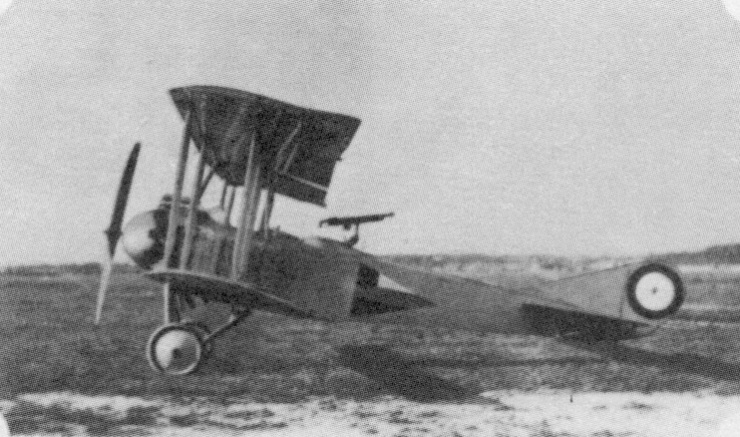
Lebed XII, the manufacturer “best seller” with over 200 produced until the revolution.
Before 1914, the featured fighter/observation plane from Lebed was a copy of the Deperdussin model D, and 63 of these planes derived from these French monoplane were built under licence, used on the frontline until 1917. Lebedev would acquired one of the next “Deperdiussen-Sport”, “monocok N°11”, and it was built in early 1916 with a Gnome 100 hp (74 KW), with a wooden propeller. The fuselage was made of wooden frames and canvas, and plywood for the central, forward section, and Lebedev tried, but failed, to fit a synchonized machine-gun. This ended all prospects to sold this model to the authorities, despite its 180 kph top speed. However, Lebed found success with the Lebed XII, derived from the model X but with the right propulsion, and a small serie was derived in 1915. Better still, the next Lebed XII was a success, massed-produced until the end of the war.
Models
In strong are the production models, followed with the estimated numbers, in brackets
- Lebed-Deperdioussen D (1914)(63)
- Lebed-Voisin (1915)(?)
- Lebed VI (?) (1)
- Lebed VII fighter (1916) (1)
- Lebed VIII fighter (1916) (1)
- Lebed X fighter/observation (1915) (2)
- Lebed XI (1915) (10-12)
- Lebed XII (1915) (216)
- Lebed Deperdioussen-Sport (1916) (1)
- Lebed XIII (1916)
- Lebed XIV, Lebed-Grand (1917) heavy fighter (1)
- Lebed XVII
- Lebed K1
 Sikorsky
Sikorsky
The Russian Aircraft Genius
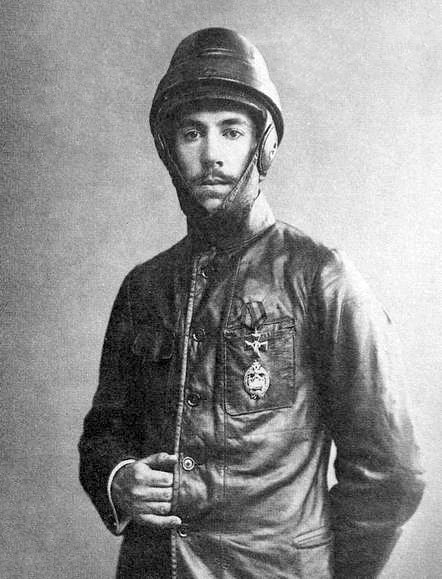 The name of Sikorsky is quite familiar to American ears today, but as an helicopter designer, his models spanned decades and flew everywhere in the world, both for civilian companies and the military, and proved indispensable, from tossed far north sea offshore stations to various naval air services, and this story is certainly not over yet.
The name of Sikorsky is quite familiar to American ears today, but as an helicopter designer, his models spanned decades and flew everywhere in the world, both for civilian companies and the military, and proved indispensable, from tossed far north sea offshore stations to various naval air services, and this story is certainly not over yet.
Igor Ivanovich Sikorsky (И́горь Ива́нович Сико́рскийwas born May 25, 1889 in Kiev (died in Easton, Connecticut in 1972) was formed at the Maritime Cadet Corps, in 1903, learning fast he would choose an engineering career. But this changed when visiting Germany with his father in 1908, seeing the Wright Brother and a zeppelin airship. He immediately thought he will be an airman. He made a trip in Paris in 1909, perhaps by then the mecca of aviation, and immediately working upon his return to an helicopter. Unfortunately he also understood it will never fly. But soon, he became an aviation pioneer first with fixed-wing aircraft in Imperial Russia, frail pushers propelled by a 15 hp Anzani 3-cylinder fan engine. The S-2 was his second design, and knew success. His fifth S-5, won him national recognition as well and was also licensed. The S-6-A won the 1912 Moscow Aviation Exhibition and at the end of the year, earned his young designer, builder and pilot the first prize in the military competition at Saint Petersburg.
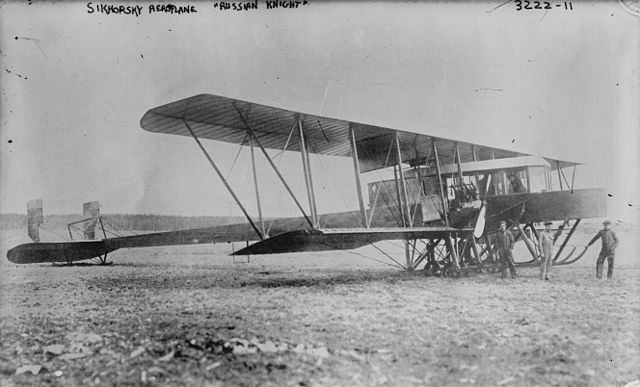
Sikorsky Bolshoi Baltisky of 1913, before receiving its pair of pusher engines
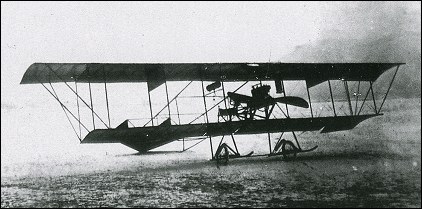 In early 1912, he became Chief Engineer of the Russian Baltic Railroad Car Works aircraft branch in Saint Petersburg. Bold enough because of this backing, he attempted his first four-engine aircraft, the S-21 Russky Vityaz (“grand”) later known Bolshoi Baltisky in 1913. This was the blueprint for future developments like the amazing S-22 Ilya Murometz airliner in 1914, by then the largest plane on record worldwide.
In early 1912, he became Chief Engineer of the Russian Baltic Railroad Car Works aircraft branch in Saint Petersburg. Bold enough because of this backing, he attempted his first four-engine aircraft, the S-21 Russky Vityaz (“grand”) later known Bolshoi Baltisky in 1913. This was the blueprint for future developments like the amazing S-22 Ilya Murometz airliner in 1914, by then the largest plane on record worldwide.
For such a young designer that was amazing, just after having graduated by the Saint Petersburg Polytechnical Institute in 1914. That shows the caliber of the man. He soon converted his giant plane into a bomber for which he was decorated with the Order of St. Vladimir. He also turned his attention to smaller planes. Outside the S-6, a 1912 three-passenger plane and the two twin and four engines planes, he also worked on two little-known fighter aircrafts, motivated by Lt.Col. Chidlovski, from the Russo-Balt front, to maintain a previously canceled order for 32 Murometz type bombers, and after experience on the front, ask for a complement of escort fighters.
Sikorsky rose to the challenge and went with a RBVZ design, the S.16. It was designed in a short time, it was influenced by Farman, but was a “faux” fighter with side-by-side pilot and gunner, for the sole Vickers off-axis MG synchronized by Lavrov system. But this system suffered many issues and a second 7.7mm Lewis light MG was mounted on the upper wing. The S.16 was to be propelled by a Le Rhone 90 or 100 hp but a 80 hpwas chosen at the end. Production started in February 1915 and went on with 18 more ordered, until March 1916 but Russo-Balt was criticized for the plane was obsolete then, despite of this, more S.16 were delivered until early 1917 with more improvements in turn.
Ultimately the S.2 was worked out as a successor in early 1916 as a true one-seat biplane, this time with a more potent Gnome 100 or 120 hp. It was really influenced by the Nieuport 17, but had some specifics and they revealed faster than their inspiration. However only five were built ultimately. With the revolution, Igo Sikorsky fled to the US, and from there a new story began… 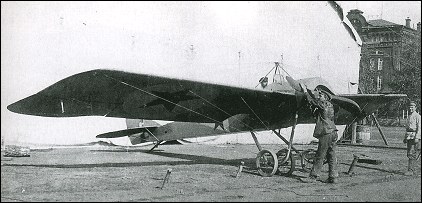
Models
- S-6 passenger plane (1912)
- S-7 monoplane trainer (1912) (1)
- S-8 biplane trainer (1912) (1)
- S-9 monoplane (1913) (1)
- S-10 floatplane (1913) (16)
- S-11 monoplane (1913) (1)
- S-12 monoplane (1913) (12)
- S-13/14 monoplanes (paper projects)
- S-15 light bomber (1913) (1)
- S-21 Russky Vityaz four-engine biplane (1913) (1)
- S-22 Ilya Muromets four-engine biplane (1913) (85+)
- S-16 fighter biplane (1915) (c30)
- S-17 fighter biplane (1915) (2)
- S-18 light bomber (1915) (2)
- S-18 prototype bomber (1915) (1)
- S-20 fighter biplane (1915) (5)
- S-28 bomber designed in France (1918) (proposal)
Sources
Imperial Russian Air Service
Imperial Air Power Russia
Sikorsky Ilya Murometz
Sikorsky S16
Anatra DS
Anatra_DS
Anatra_Anadis
Grigorovich M-5
Grigorovich design bureau
Lebed XI
Lebed XII
Lebed XI
Lebed Type XII
Lebed XI
Igor Sikorsky
Sikorky S-5
Sikorky S-6
Sikorky S-10
Sikorky S-16
The Osprey Encyclopedia Of Russian Aircraft 1875-1995
Herbert Leonard Russian and Soviet fighters 1915-1950


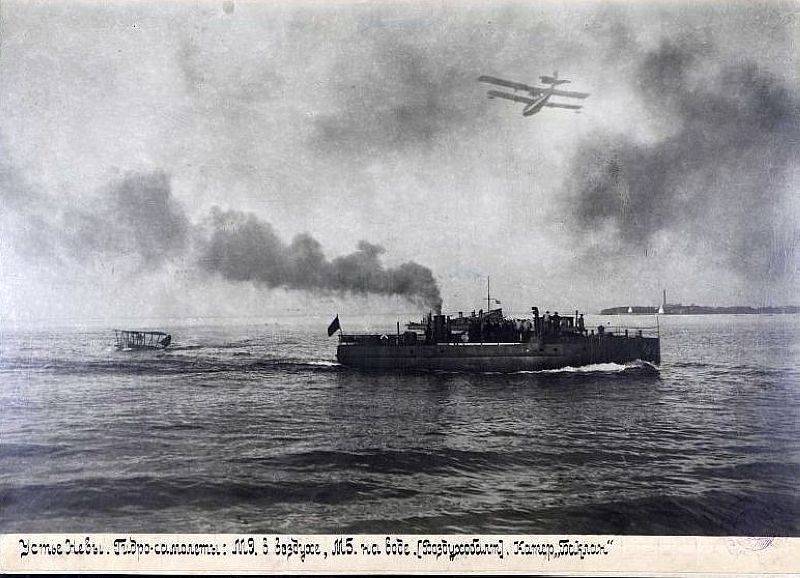
 Latest Facebook Entry -
Latest Facebook Entry -  X(Tweeter) Naval Encyclopedia's deck archive
X(Tweeter) Naval Encyclopedia's deck archive Instagram (@navalencyc)
Instagram (@navalencyc)





 French Navy
French Navy Royal Navy
Royal Navy Russian Navy
Russian Navy Armada Espanola
Armada Espanola Austrian Navy
Austrian Navy K.u.K. Kriegsmarine
K.u.K. Kriegsmarine Dansk Marine
Dansk Marine Nautiko Hellenon
Nautiko Hellenon Koninklije Marine 1870
Koninklije Marine 1870 Marinha do Brasil
Marinha do Brasil Osmanlı Donanması
Osmanlı Donanması Marina Do Peru
Marina Do Peru Marinha do Portugal
Marinha do Portugal Regia Marina 1870
Regia Marina 1870 Nihhon Kaigun 1870
Nihhon Kaigun 1870 Preußische Marine 1870
Preußische Marine 1870 Russkiy Flot 1870
Russkiy Flot 1870 Svenska marinen
Svenska marinen Søværnet
Søværnet Union Navy
Union Navy Confederate Navy
Confederate Navy Armada de Argentina
Armada de Argentina Imperial Chinese Navy
Imperial Chinese Navy Marinha do Portugal
Marinha do Portugal Mexico
Mexico Kaiserliche Marine
Kaiserliche Marine 1898 US Navy
1898 US Navy Sovietskiy Flot
Sovietskiy Flot Royal Canadian Navy
Royal Canadian Navy Royal Australian Navy
Royal Australian Navy RNZN Fleet
RNZN Fleet Chinese Navy 1937
Chinese Navy 1937 Kriegsmarine
Kriegsmarine Chilean Navy
Chilean Navy Danish Navy
Danish Navy Finnish Navy
Finnish Navy Hellenic Navy
Hellenic Navy Polish Navy
Polish Navy Romanian Navy
Romanian Navy Turkish Navy
Turkish Navy Royal Yugoslav Navy
Royal Yugoslav Navy Royal Thai Navy
Royal Thai Navy Minor Navies
Minor Navies Albania
Albania Austria
Austria Belgium
Belgium Columbia
Columbia Costa Rica
Costa Rica Cuba
Cuba Czechoslovakia
Czechoslovakia Dominican Republic
Dominican Republic Haiti
Haiti Hungary
Hungary Honduras
Honduras Estonia
Estonia Iceland
Iceland Eire
Eire Equador
Equador Iran
Iran Iraq
Iraq Latvia
Latvia Liberia
Liberia Lithuania
Lithuania Mandchukuo
Mandchukuo Morocco
Morocco Nicaragua
Nicaragua Persia
Persia San Salvador
San Salvador Sarawak
Sarawak Uruguay
Uruguay Venezuela
Venezuela Zanzibar
Zanzibar Warsaw Pact Navies
Warsaw Pact Navies Bulgaria
Bulgaria Hungary
Hungary

 Bundesmarine
Bundesmarine Dutch Navy
Dutch Navy Hellenic Navy
Hellenic Navy Marina Militare
Marina Militare Yugoslav Navy
Yugoslav Navy Chinese Navy
Chinese Navy Indian Navy
Indian Navy Indonesian Navy
Indonesian Navy JMSDF
JMSDF North Korean Navy
North Korean Navy Pakistani Navy
Pakistani Navy Philippines Navy
Philippines Navy ROKN
ROKN Rep. of Singapore Navy
Rep. of Singapore Navy Taiwanese Navy
Taiwanese Navy IDF Navy
IDF Navy Saudi Navy
Saudi Navy Royal New Zealand Navy
Royal New Zealand Navy Egyptian Navy
Egyptian Navy South African Navy
South African Navy






























 Ukrainian Navy
Ukrainian Navy dbodesign
dbodesign